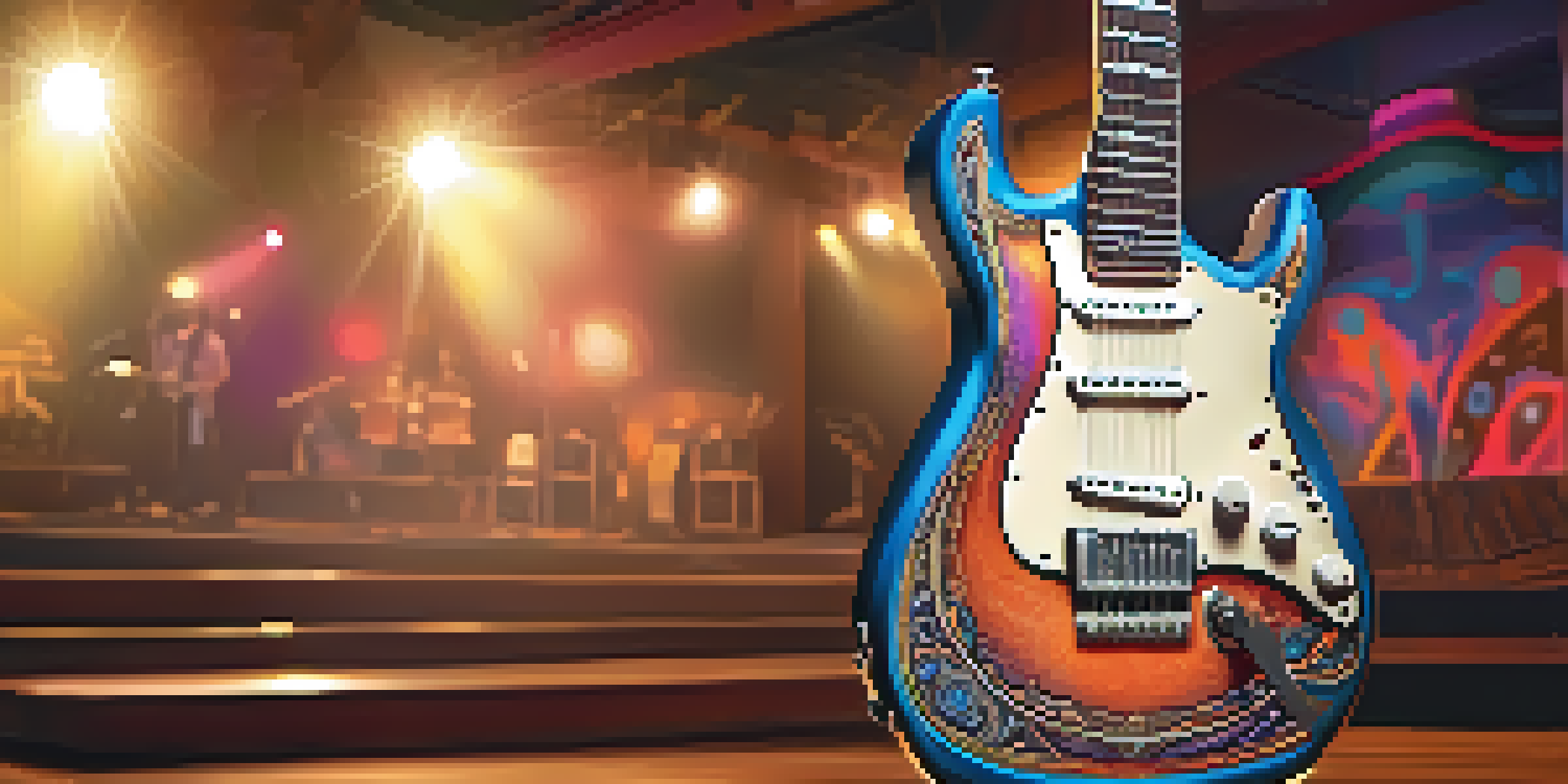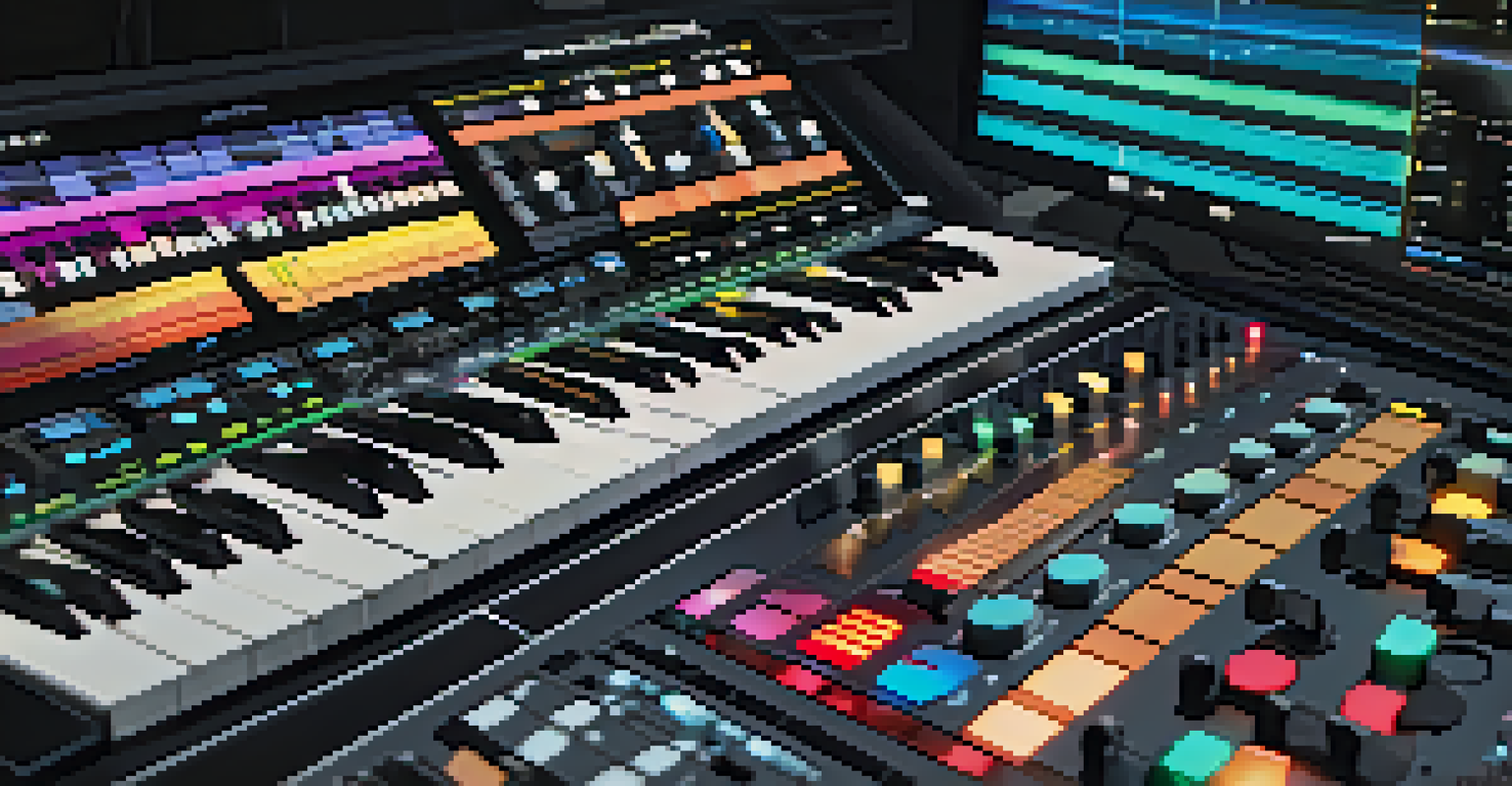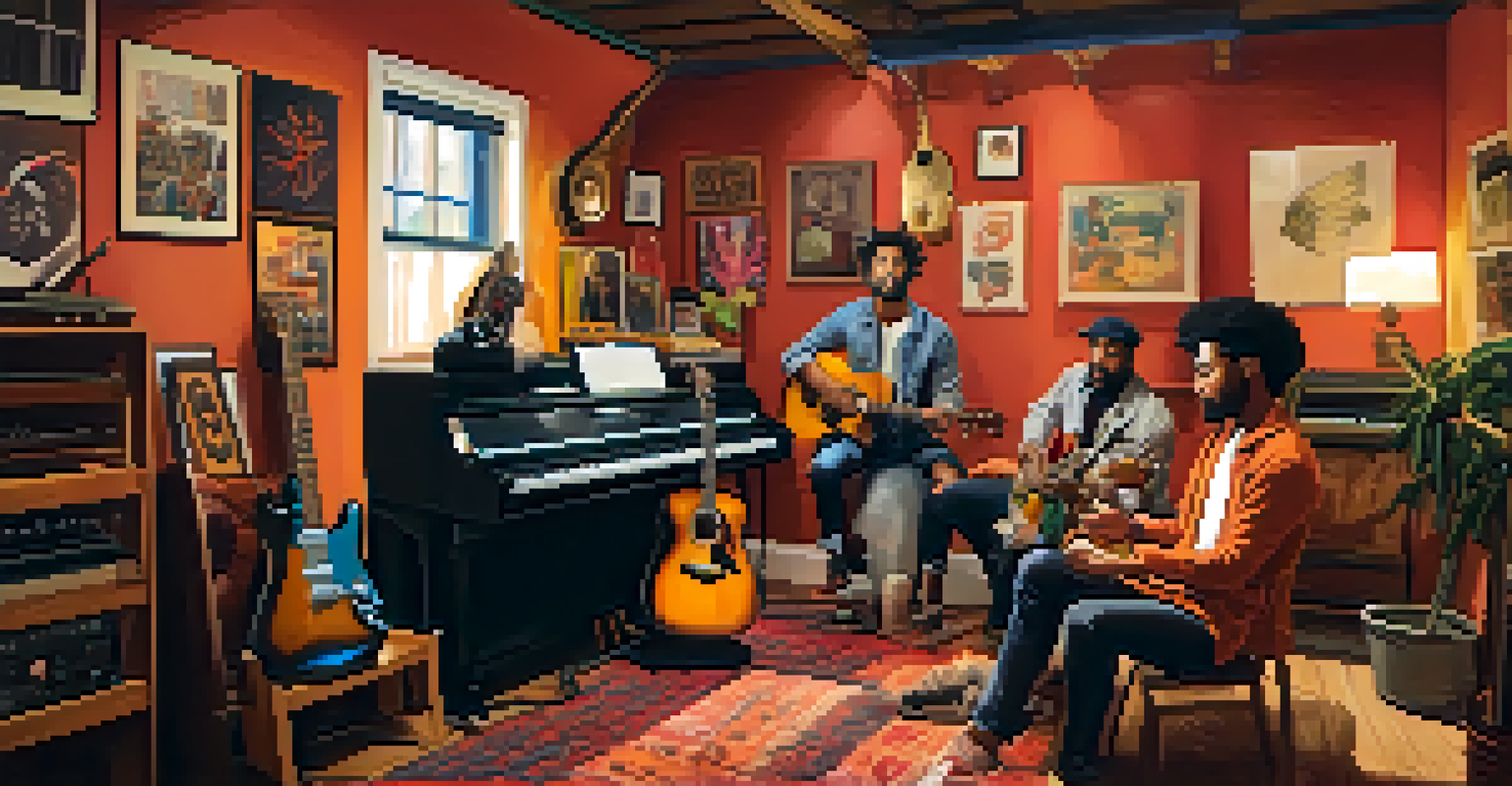The Evolution of Music Genres with Technology

From Acoustic to Electric: The Birth of New Sounds
The transition from acoustic instruments to electric ones marked a significant shift in music. Artists began to experiment with new sounds that were previously unimaginable, leading to the birth of genres like rock and roll. This evolution opened doors for musicians to push creative boundaries and innovate in ways that resonated with audiences.
Music is the shorthand of emotion.
For instance, the introduction of the electric guitar revolutionized how music was played and perceived. It allowed for louder, more dynamic performances, which captivated listeners and transformed live shows. This change not only influenced the music itself but also the entire culture surrounding it, as concerts became a communal experience of energy and excitement.
As technology progressed, other innovations like amplifiers and synthesizers further expanded the sonic palette. These tools enabled musicians to blend genres and create entirely new styles, paving the way for the diverse landscape of music we enjoy today.
The Rise of Digital Music: Accessibility and Change
The advent of digital music in the late 20th century brought about a revolution in how we consume and create music. With the introduction of MP3 files and streaming services, music became more accessible than ever. Listeners could now explore various genres from the comfort of their homes, leading to a more eclectic taste across demographics.

This shift not only changed listening habits but also impacted how artists approached their craft. The ability to easily share music online encouraged experimentation and collaboration, resulting in the fusion of genres. For example, the blending of hip-hop with electronic music has given rise to sub-genres like trap, showcasing how digital platforms have influenced creativity.
Music's Evolution through Technology
The transition from acoustic to electric instruments and digital platforms has transformed music creation and consumption, leading to new genres and innovative sounds.
Moreover, digital music has changed the business landscape for artists. With fewer barriers to entry, independent musicians can distribute their work globally, allowing for a more diverse range of genres to flourish. This democratization of music has made it possible for unique sounds and voices to emerge, enriching the music scene.
Sampling: The Art of Reimagining Sounds
Sampling has become a cornerstone of modern music production, allowing artists to incorporate existing recordings into new compositions. This technique originated in genres like hip-hop, where producers creatively reworked snippets of older tracks to create something fresh. It’s a form of homage, blending the past with contemporary styles.
The beautiful thing about music is that it transcends language.
One iconic example is the use of funk and soul samples in hip-hop tracks, which not only pays tribute to earlier artists but also introduces their music to new audiences. This practice has led to a revival of interest in classic genres, as listeners seek out the original songs that inspired their favorite tracks.
However, sampling also raises questions about copyright and ownership. As the boundaries of music creation blur, producers must navigate the complexities of intellectual property while continuing to innovate. This ongoing dialogue highlights the relationship between technology and creativity in the music industry.
The Role of Social Media in Music Genre Evolution
Social media platforms have transformed how artists connect with their audiences, impacting genre evolution significantly. Musicians can now share their work instantly, gather feedback, and build fan bases without traditional gatekeepers. This direct communication encourages collaboration and genre-blending, as artists influence one another across platforms.
For example, TikTok has emerged as a powerful tool for music discovery, where snippets of songs can go viral overnight. This phenomenon has propelled lesser-known artists into the spotlight, often leading to the rise of new genres and trends. The rapid spread of music through social media creates a dynamic environment where genres can evolve and adapt quickly.
Sampling and Genre Blending
Sampling has allowed artists to creatively rework existing music, fostering genre blending and reviving interest in classic sounds.
Additionally, the global reach of social media allows for cultural exchange, introducing listeners to international sounds. This exposure has led to a richer tapestry of music genres, as influences from different cultures intermingle and inspire new creations. The result is an ever-evolving musical landscape that reflects the diversity of its creators.
The Impact of Music Production Software on Creativity
Advancements in music production software have democratized music creation, allowing anyone with a computer to produce high-quality tracks. Programs like Ableton Live and FL Studio have made it easier for aspiring musicians to experiment with sounds and techniques. This accessibility has led to an explosion of creativity across genres.
For instance, bedroom producers can now create polished tracks from home, often blending various styles to form unique sounds. This trend has given rise to sub-genres that might not have existed otherwise, as artists play with elements from different musical traditions. The result is a vibrant and dynamic music scene that reflects personal expression and innovation.
Furthermore, these tools enable musicians to collaborate remotely, breaking down geographical barriers. Artists from different parts of the world can work together seamlessly, blending their cultural influences and musical styles. This global collaboration enriches the music landscape, fostering an environment where genres continuously evolve.
Artificial Intelligence: The New Frontier in Music
Artificial intelligence (AI) is making waves in the music industry, offering new tools for composition and production. AI algorithms can analyze vast amounts of data to identify patterns and suggest melodies, enabling artists to explore new creative avenues. This technology can act as both a collaborator and a source of inspiration.
For example, AI-generated music has already been used in various applications, from film scores to advertising jingles. This trend raises intriguing questions about the role of human creativity versus machine-generated content. While some purists may resist this evolution, others see it as an opportunity to enhance their own creative processes.
AI's Role in Music Creation
Artificial intelligence is reshaping the music landscape by providing new tools for composition and production, challenging traditional notions of creativity.
As AI continues to evolve, we can expect to see its influence on genres grow. This technology may lead to the emergence of entirely new musical styles, as artists experiment with AI's capabilities. The intersection of music and technology is creating an exciting frontier that challenges our understanding of creativity.
The Future of Music Genres in a Tech-Driven World
As technology continues to advance, the future of music genres looks promising yet unpredictable. We can expect further blending of styles, as artists embrace the tools available to them. This ongoing evolution will likely lead to the emergence of new genres that reflect contemporary cultural shifts and technological advancements.
Moreover, the rise of virtual and augmented reality in music experiences may change how we interact with genres. Imagine attending a concert where the visuals and sounds are tailored to your preferences, creating a personalized musical journey. Such innovations could redefine live music and genre experiences, making them more immersive and engaging.

Ultimately, the relationship between technology and music will continue to shape the industry. As artists adapt to new tools and platforms, they will redefine what genres mean to them and their audiences. The future of music is a tapestry woven from the threads of creativity, technology, and cultural evolution.